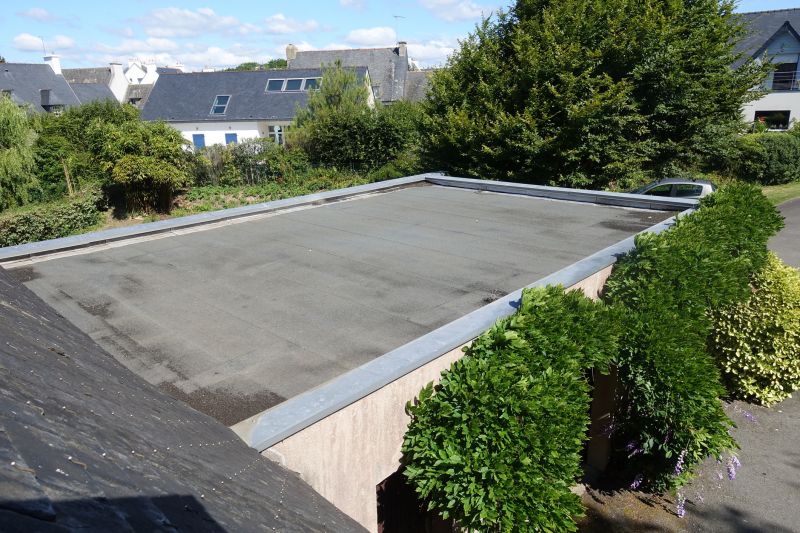Expert Picks For Essential Leaky Roof Replacement Products
Discover reliable products favored by professionals to help you address roof leaks efficiently and ensure long-lasting results.
 Addressing a leaky roof requires selecting the right products to ensure effective sealing and long-lasting repairs. When dealing with roof leaks, the focus should be on durable, weather-resistant materials that can withstand various environmental conditions. From sealants and patching compounds to roofing membranes and flashing, there are numerous options designed to cater to different types of roof damage and materials. Proper application and selecting suitable products can help prevent further deterioration and protect the interior of the building.
Addressing a leaky roof requires selecting the right products to ensure effective sealing and long-lasting repairs. When dealing with roof leaks, the focus should be on durable, weather-resistant materials that can withstand various environmental conditions. From sealants and patching compounds to roofing membranes and flashing, there are numerous options designed to cater to different types of roof damage and materials. Proper application and selecting suitable products can help prevent further deterioration and protect the interior of the building.
Top Overall Option
Roofing Sealant and Patch Kit
A comprehensive roofing sealant and patch kit offers a versatile solution for various leak repairs. These kits typically include high-quality sealants, patches, and applicators designed to adhere to different roofing materials such as asphalt, metal, or shingles. They are suitable for sealing small cracks, holes, and gaps, providing an effective barrier against water intrusion. Easy to apply and quick-drying, these kits are practical for both DIY homeowners and professionals seeking a reliable, all-in-one repair option.
Types of Products For Leaky Roof Replacements
Roofing Sealants
Sealants are used to fill cracks and seams, providing waterproofing and flexibility to accommodate roof movement.
Roof Patches
Patches are adhesive or mechanically fastened materials used to cover and seal damaged areas on the roof surface.
Roofing Membranes
Liquid or sheet membranes create a waterproof barrier over large areas, ideal for extensive damage or flat roofs.
Flashing Materials
Flashing is used to seal joints and edges around chimneys, vents, and other protrusions to prevent leaks.
Roof Coatings
Protective coatings provide a waterproof layer that can extend the life of existing roofing materials.
Roofing Underlayment
Underlayment adds an extra layer of protection beneath shingles or tiles, preventing water infiltration.
Self-Adhesive Membranes
These membranes adhere directly to the roof surface, providing an easy-to-apply waterproof barrier.
Roof Screws and Fasteners
Secure loose or damaged roofing components to prevent further leaks and ensure stability.
Roof Vent Covers
Vent covers help prevent water entry through roof vents and can be part of leak prevention strategies.
Roof Repair Tape
Specialized tapes designed for quick sealing of leaks and cracks on various roofing surfaces.
Roofing Adhesives
Adhesives are used to bond patches, membranes, and other repair materials securely to the roof surface.
Roofing Caulk
Caulks are used for sealing small gaps and joints, providing a flexible, waterproof seal.
Roofing Tapes
Tapes designed specifically for roofing repairs can provide quick, temporary or semi-permanent fixes.
Storm and Leak Barriers
Barrier membranes act as an extra layer of defense against water penetration during storms.
Popular Choices
A versatile kit suitable for sealing small cracks and holes on various roof types, popular for DIY repairs.
These coatings provide a seamless waterproof layer, often used for flat or low-slope roofs.
Easy to apply and effective for patching large damaged areas quickly.
Weather-resistant tape designed to seal around chimneys, vents, and other roof penetrations.
Popular for sealing small gaps and cracks, offering flexibility and waterproofing.
Widely used under shingles or tiles to add an extra layer of water resistance.
Convenient for temporary fixes and quick sealing of leaks on various roof surfaces.
Popular for precise application around seams, vents, and flashings.
Essential for securing loose shingles or panels and preventing further leaks.
Commonly used to prevent water entry through roof vents, especially during storms.
Popular for added protection in storm-prone areas, providing extra waterproofing.
Understanding the structure of your roof and the extent of the leak is essential before choosing repair products. For minor leaks, sealants and patches might suffice, while more significant damage could require durable membranes or replacement sections. It is also important to consider compatibility with existing roofing materials, ease of application, and resistance to UV rays and moisture. Investing in quality products and following manufacturer instructions can contribute to a more reliable and long-lasting fix.
Safety considerations should not be overlooked when working on roof repairs. Using appropriate protective gear, working in suitable weather conditions, and following safety protocols are critical steps. Additionally, some repairs might require professional expertise, especially for complex or extensive damage. Regular inspection and maintenance after initial repairs can help identify new leaks early and extend the lifespan of your roof. Properly chosen products and careful application can make a significant difference in maintaining a secure, leak-free roof over time.
Key Buying Considerations
- Compatibility with existing roofing materials to ensure proper adhesion and performance.
- Weather resistance, including UV stability and waterproofing capabilities.
- Ease of application, especially if DIY repairs are intended.
- Durability and longevity of the product under various environmental conditions.
- Flexibility to accommodate roof movement and temperature changes.
- Proper curing or drying times to ensure effective sealing.
- Size and coverage area to match the extent of the damage.
- Safety features, such as non-toxic formulations and ease of handling.
- Compatibility with other repair products used in the project.
- Manufacturer reputation and product reviews for reliability.
- Cost-effectiveness relative to the repair scope and product quality.
- Availability of detailed instructions or technical support.
- Resistance to mold, mildew, and algae growth over time.
- Ability to seal around protrusions, vents, and flashing effectively.
- Environmental resistance, including wind uplift and thermal cycling.
